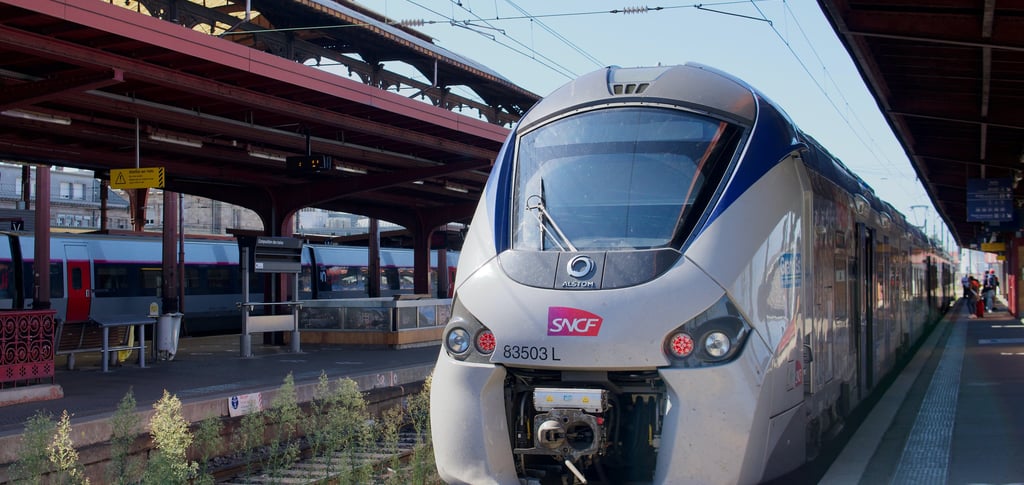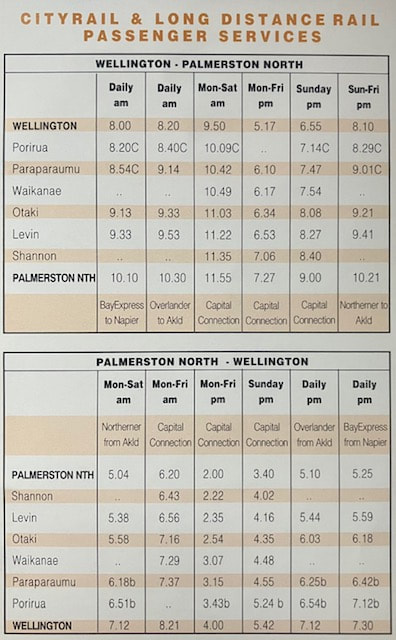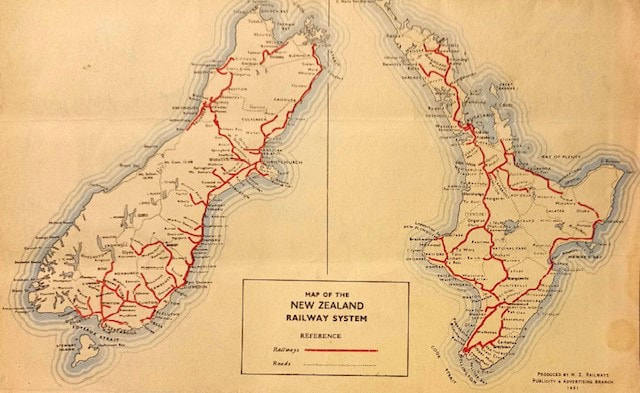Modern Passenger Rail for New Zealand: Part 2
This second article begins with a discussion of National Network and ends with a comment on rail tourism.
REGIONAL RAILINVESTMENTTOURISMNIGHT TRAINS
Michael Nicholson
5/29/20235 min read


In part 1 of this vision for bringing back passenger rail, I argued that reinstating national passenger rail is logical, it really should be as simple as purchasing a fleet of new trains and progressively upgrading or building new stations. But I recognised that there are of course a number of other things which must happen beforehand, all of which require political will, pragmatism, investment and commitment.
In this second article, I begin with a discussion of National Network - Service Categories. I end with a comment on rail tourism.
In the final article, I will comment more on routes and possibilities.
It is well recognised that frequency, reliability, and price influence growth in passenger usage. Routes should operate daily and include good on-the-day frequency, it is also important to make connections with other rail services and with other modes to form a joined-up system that extends network reach. Feeder buses are a good way to connect smaller communities to the national passenger rail network.
When investment has been made in new trains, it is important to utilise equipment to maximum advantage. An all-of-network approach allows for improved equipment and staff usage, potentially leading to additional services and new routes - simply by using the assets that we already have more effectively.
The national network can be developed and expanded in a staged and planned way, making investment and development manageable.
Night Trains:
A realistic and modern alternative to flying, with a high potential to reduce carbon emissions and. with most infrastructure already in place, services can be implemented relatively quickly. Night trains do not need to travel fast and slot in well with freight trains. Night trains could provide a mixture of accommodation choices to meet all budgets and expectations (sleeper compartments, lay-flat seats and standard economy seating). Trains should be of a high quality and provide good facilities such as a lounge and showers. Night trains are about convenient departure and arrival times, city-centre to city-centre and are a good use of travel time, simply sleep the kilometres away.
Day Connectors:
Day trains need to operate daily and frequently, at least morning and afternoon departures when possible. Trains need to stop at more stations and connect with other services and other modes. Prices need to be realistic from a public transport perspective, ideally First and Standard Class should be available as this provides a natural split between expectations around comfort and cost.
Corridor trains:
Longer distance commuter style services operating within a defined corridor, such as Palmerston North to Wellington Capital Connection / Hamilton to Auckland Te Huia. Seating and catering can be more basic and compact on corridor trains to accommodate more passengers. Night trains and Day connectors could be included on corridor timetables, this will highlight expanded travel options over these corridors.
Mixed passenger:
“Small-lots” freight on inter-regional passenger trains would combine the traditional New Zealand regional rail concept of parcels traffic, with modern cargo handling methods as used in the airline industry and an internet-based retail economy. Modern trains will tend to include large commuter style doors for easy passenger accessibility, these doors and the train layout work really well with roll-on roll-off caged small-lots freight delivery. This concept maintains the journey times expected by passengers. Freight delivered by train would be left at a locker within each regional station, this can then be collected by a local agent, for house-hold delivery. The same process can work in reverse, for goods being despatched from regional businesses to larger cities. The mix of fast broadband, and low-to-zero emissions rail connection; for both passengers and small-lots freight, can transform communities, attract new businesses, and support sustainable growth in our cities and regions.
Heavy freight attached to some trains, such as night trains between New Plymouth and Auckland (via Stratford to Okahukura line /or Marton & NIMT), might be worthwhile in some situations, as a way of combining the resources of both passenger and freight, to improve access to some regional areas.
Feeder Services:
It is important that the national passenger rail network link into other modes and systems, to create a total national public transport system. Regional buses, ferries, suburban train and bus systems, all need to be connected.
Examples of passenger rail networks with good, well organised, through booked and guaranteed connecting feeder bus services can be found in the Australian States of New South Wales, Victoria and Queensland.
Utilisation of Equipment - Network Approach
These are brief examples of how equipment might be better utilised on a couple of routes, leading to additional services, new routes and an improved network.
Auckland and Whangarei:
Night trains between Wellington and Auckland could continue to Whangarei, forming a morning service from Auckland northbound (in the reverse southbound). This concept would in effect utilise two train sets to operate four individual services.
Alternative Wellington and Auckland Operation:
Three train sets could operate four train services over a 24-hour period:
Wellington to Auckland (up) day train could immediately return as the (down) night train.
Wellington to Auckland (up) night train could immediately return as the (down) day train.
Maintenance rotation at the Wellington maintenance depot.
This was how train rotations operated between Wellington and Auckland 1991 to 2004, when the last night train ceased operation.
Lower North Island:
Weekday Off-Peak Capital Connection services could operate to Whanganui, rather than trains standing idle during the daytime.
Friday night and weekend Capital Connection services could be extended from Palmerston North to Napier, also to New Plymouth via Whanganui.
Weekday Wellington to Masterton service could be extended to Palmerston North, via the north Wairarapa line.
Friday night and weekend Masterton services could be extended to Palmerston North and then Whanganui, via the Northern Wairarapa line.
Masterton - Wellington (Wairarapa Connection):
New trains will allow for increased service over this line, doubling frequency of both weekday and weekend train services. By 2025 upgrades to Wairarapa rail track and signalling infrastructure will be completed and this will make train travel faster than driving between Masterton and Wellington. Ideally some off peak and weekend trains should be extended to Palmerston North and possibly Whanganui, via the North Wairarapa line.
Weekend trains could also be extended to Napier.
Auckland - Hamilton (Te Huia)
New Lower North Island hybrid trains provide an opportunity to re-equip Te Huia with the modern trains. Hybrid trains will allow Te Huia to access Britomart station, using the two terminating platforms at this station. Electrification should be completed between Pukekohe and Hamilton; however, battery power will allow Te Huia to operate over non-electrified tracks in the meantime and provides for future service extensions.
The third main within in Auckland's southern suburban network will allow Te Huia to reduce travel times. Stations need to be provided at Te Kauwhata, Tuakau and Pokeno as soon as possible. The Te Huia corridor could be extended Cambridge (last four km of track needs to be re-laid), also Te Awamutu - Otorohanga - Te Kuiti, and Morrinsville - Tirau - Putaruru - Tokoroa, and Putaruru to Rotorua. New routes and services travelling through the Te Huia corridor should be recognised on Te Huia timetables. Night trains would provide later evening options for passengers travelling to Hamilton.
Tourism:
KiwiRail is developing their high end Scenic Plus Class, this looks set to be superb. Carriages refurbished to a higher specification will shortly be added to the Tranz Alpine, then rolled out to the other two services over time. An onboard chief preparing fresh meals, and additional comforts, are exciting and very appealing for some people. The menu looks exquisite and very tempting.
This style of service is much needed in New Zealand. However, it must sit alongside, and not instead of, public transport by train.




